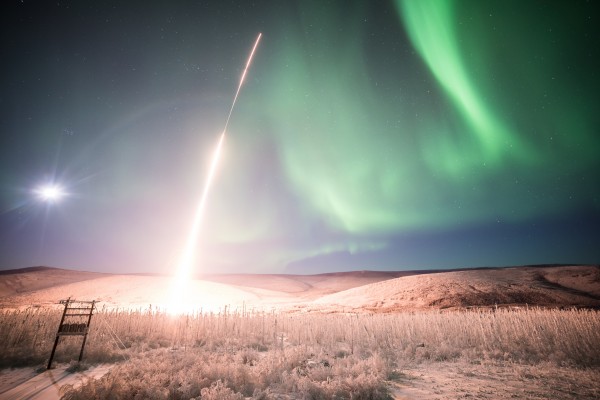Last rocket of the season launches into the aurora
January 28, 2015

Sue Mitchell
907-474-5823
01/28/2015
At 1:41 a.m. on January 27, 2014, a NASA sounding rocket launched from Poker Flat Research Range 30 miles north of Fairbanks. The rocket arced through the upper atmosphere and ejected seven instruments that measured voltage and currents from an aurora display over Kaktovik.
"We are pleased," said Charles Swenson of Utah State University, head of a team that waited two weeks for perfect launch conditions. "It's an exciting thing to have gotten that complex payload, that so many people poured their hearts and souls into, into an event that we wanted."
On the downslope of its trajectory from Poker Flat to the ice of the Arctic Ocean, the four-stage rocket deployed seven instruments to create a moving formation 300 miles above Kaktovik. There, the instruments measured the electrical energy from auroral arcs to allow researchers observations from several different places at once. The instruments broadcast data back to Poker Flat instantly before they landed on the ice of the Arctic Ocean.
"Having this multi-point measurement was why NASA said this was the most difficult mission they've done," Swenson said from a Fairbanks hotel where he was checking data a few hours after the launch. "We have all indications that it worked."
The Auroral Spatial Structures Probe study was the final launch of the 2015 season at Poker Flat. Swenson and his colleagues, including UAF's Don Hampton, had pulled 14 all-nighters waiting for the right aurora and other conditions, which included clear skies in northern Alaska as well as the Interior. The temperature at Poker Flat during Swenson's launch was 44 below zero.
All five of the 2015 launches, including four rockets that launched Jan. 26, were part of NASA's Sounding Rocket Program, managed by officials from NASA's Heliospheric Division at the Wallops Flight Facility in Virginia.
Located in Chatanika, Alaska, Poker Flat Research Range is part of the University of Alaska Fairbanks Geophysical Institute.
DC/1-28-15/178-15


